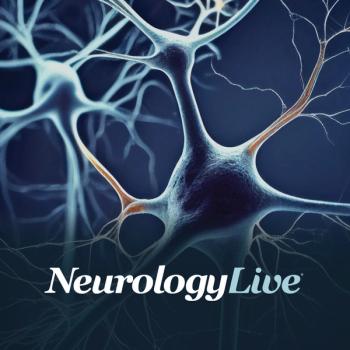
COVID-19 Diagnosis at Stroke Onset Linked to Worse Outcomes
An analysis from English and Scottish stroke centers provides physicians a new view of the trends and outcomes of patients with COVID-19 who experience stroke.
This content was originally published on Practical Cardiology, a sister publication of NeurologyLive. To view the original post,
A recently published analysis of coronavirus disease 2019 (COVID-19) data from more than 1400 patients with stroke offers a new view of outcome predictors for this closely watched patient population.1
All told, the data suggest that having COVID-19 at onset of stroke is associated with more than twice the rate of mortality of other patients with stroke and worse outcomes, as well as that individuals of Asian descent may be at higher risk of COVID-19-associated strokes than other groups.
"Our findings suggest that in some people, COVID-19 may influence stroke risk through its effect on excessive blood clotting or inflammation, and may also influence the characteristics and outcome of the stroke, including greater severity with a higher chance of multiple large vessel blood clots,” said study investigator David Werring, PhD, professor and consultant neurologist, Queen Square Institute of Neurology, University College London (UCL), and National Hospital for Neurology and Neurosurgery, in a statement.2
Werring added that the data offer support for testing individuals for COVID-19 when they present to the hospital with a stroke, and noted that “further research is needed to determine whether treatments (such as the use of early full dose anticoagulation) should differ depending on this test result.”
With a knowledge gap related to characteristics and outcomes of stroke in patients with COVID-19, Werring and team of colleagues from the University College of London sought to provide clinicians with an updated overview of trends in this area. The (Service Evaluation of The Impact of COVID-19 On Stroke (SETICOS) project, which is currently being conducted in 13 stroke centers in England and Scotland, was designed to fill this hole.
READ MORE:
Using data from SETICOS, investigators created a case-control study with patients admitted for stroke between March 9 and July 5, 2020. From a search of this time period, investigators identified 86 patients with stroke and evidence of COVID-19 at time of onset. For their analysis, investigators compared the characteristics and outcomes of these patients to those of the 1384 stroke patients admitted during the same time period without evidence of COVID-19.
Of the 86 patients with strokes and COVID-19, 81 were ischemic strokes and 5 were intracerebral hemorrhages. This group had a median age of 74.5 years (range, 67–84), and 54.7% were men, 71.6% were white, 9.5% were black, and 17.6% were Asian. Of the 1834 stroke patients in the control group, 1193 ischemic strokes and 191 were intracerebral hemorrhages. This group had a median age of 73 years (range, 61–82), 52.8% were men, 82.3% were white, 9.1% were black, and 7.3% were Asian.
In comparison to controls with ischemic stroke, those with ischemic stroke and COVID-19 were more likely to have multiple large vessel occlusions (17.9% vs 8.1%; P <.03) and were more severe (median National Institutes of Health Stroke Scale [NIHSS] score, 8 vs 5; P <.002).
Additionally, those with COVID-19 and ischemic stroke were associated with higher log10 D-dimer levels (COVID-19: 3.4; controls: 3.0; P <.01), as well as higher variance (standard deviation 0.83 vs. 0.63; P <.03), indicating there was a broader distribution of D-dimers in those with COVID-19. As well, those with COVID-19 were associated with more severe disability on discharge (median modified Rankin Scale (mRS) score, 4 vs 3; P <.0001) and inpatient death (19.8% vs 9.6%; P <.0001).
Additionally, in the 44 instances in which ischemic stroke and COVID-19 were present with both symptom onset dates recorded, COVID-19-relevant symptoms—fever, cough, or dyspnea—occurred a median of 6 days before the stroke onset. For the 3 individuals with intracerebral hemorrhage who had both dates recorded, the COVID-19 symptoms occurred a median of 4 days after the stroke onset. “Although the numbers are small, the difference between these two medians was significant (P <.002),” Werring et al. wrote.
With regard to outcomes, 19.8% of ischemic strokes among patients with COVID-19 resulted in death compared to 9.6% of patients in the control group (P <.00003). Additionally, the investigators pointed out that the recurrence of stroke during admission was very rare among those with COVID-19 (2.3%) and the control group (1.0%).
“By comparing characteristics and outcomes of strokes experienced by people with and without COVID-19, we found that there were differences between the groups, suggesting that COVID-19 exerts an influence over the presentation of stroke,” added Richard Perry, PhD, neurologist, Queen Square Institute of Neurology, UCL, and National Hospital for Neurology and Neurosurgery, in the aforementioned statement.2 "Some of the differences relate to what other studies are uncovering about COVID-19, in that it might make blood stickier and more likely to clot.”
REFERENCES
1. Perry RJ, Smith CJ, Roffe C, et al. Characteristics and outcomes of COVID-19-associated stroke: a UK multicentre case-control study. J Neurol Neurosurg Psychiatry. Published November 5, 2020. doi: 10.1136/jnnp-2020-324927
2. COVID-19 linked to worse stroke outcomes. News release. University College London. November 5, 2020. Accessed November 9, 2020. https://www.eurekalert.org/pub_releases/2020-11/ucl-clt110520.php
Newsletter
Keep your finger on the pulse of neurology—subscribe to NeurologyLive for expert interviews, new data, and breakthrough treatment updates.


































